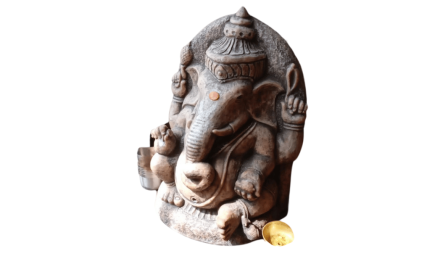The Kena Upanishad is one of the oldest and most profound texts of Hindu philosophy, dealing with the nature and origin of Brahman, the supreme reality that pervades and transcends all existence. The Upanishad consists of four sections, the first two in verse and the last two in prose.
The first two sections present a series of questions and answers that explore the relation between Brahman and the various aspects of creation, such as mind, speech, senses, life force and gods. The last two sections narrate a story that illustrates the superiority of Brahman over the gods and the role of Uma, the goddess of wisdom, in revealing Brahman to Indra, the king of gods.
The story of Brahman’s victory
The story begins with a victory that Brahman obtained for the gods over the demons. The gods, however, became proud and arrogant, thinking that they had won the battle by their own power and glory. They did not acknowledge or recognize Brahman as the source and cause of their success. Brahman, knowing their ignorance and vanity, decided to teach them a lesson. He appeared before them in a mysterious form that they could not identify. He challenged them to find out who he was and what power he had.
The failure of Agni and Vayu
The gods appointed Agni, the god of fire, to approach Brahman and inquire about his identity. Agni boasted that he could burn anything on earth with his fiery power. Brahman placed a straw before him and asked him to burn it. Agni tried his best but failed to burn the straw. He realized his limitation and returned to the gods, admitting his inability to know Brahman.
The gods then sent Vayu, the god of wind, to Brahman. Vayu claimed that he could carry away anything on earth with his mighty force. Brahman placed a straw before him and asked him to carry it away. Vayu exerted his strength but failed to move the straw. He acknowledged his weakness and returned to the gods, confessing his ignorance of Brahman.
The wisdom of Indra and Uma
The gods finally turned to Indra, the god of thunder and rain, to approach Brahman. Indra agreed and hastened to Brahman. But as soon as he reached him, Brahman disappeared from his sight. Instead, Indra saw a beautiful woman adorned with jewels in that region of space. She was Uma, the daughter of Himalaya, also known as Parvati or Shakti, the consort of Shiva. Indra respectfully asked her who Brahman was. She replied that Brahman was indeed the mysterious being who had appeared before them and who had secured their victory over the demons. She further explained that Brahman was the ultimate reality, the source of all existence, the essence of all beings, and the self of all selves.
Indra understood that Brahman was beyond the reach of his senses and mind, and that he could only be known through Uma’s grace and instruction. He realized that Uma was none other than Shakti, the power and manifestation of Brahman in feminine form. He bowed down to her and worshipped her as his guru and guide.
The moral of the story
The story of Uma and the gods in the Kena Upanishad conveys several important messages for spiritual seekers. First, it shows that Brahman is not an object or a person that can be perceived or grasped by our senses or mind. He is beyond all names and forms, qualities and attributes, causes and effects. He is transcendent as well as immanent, hidden as well as revealed, unknown as well as known.
Second, it shows that Brahman is not separate or different from Shakti, his power and expression in creation. Shakti is not inferior or subordinate to Brahman, but co-equal and co-eternal with him. She is his consort and complement, his dynamic aspect and creative force. She is also his wisdom and grace, his love and compassion.
Third, it shows that Shakti is not only present in nature and in all living beings, but also in our own self as our true nature and identity. She is our inner teacher and guide who leads us to Brahman through her revelation and instruction. She is our mother and friend who nurtures us with her blessings and protection.
Fourth, it shows that we can attain the knowledge of Brahman only by surrendering our ego and pride, by recognizing our limitations and ignorance, by seeking Uma’s help and guidance, by listening to her voice and following her instructions, by meditating on her form and chanting her name, by worshipping her with devotion and reverence, and by becoming one with her in love and bliss.
The story of Uma and the gods in the Kena Upanishad is a beautiful and inspiring illustration of the relationship between Brahman and Shakti, between the supreme reality and the supreme power, between the ultimate truth and the ultimate beauty, between the self and the self of all.
Works Cited:
(1) Kena Upanishad – Wikipedia. https://en.wikipedia.org/wiki/Kena_Upanishad
(2) Uma Instructs the Gods (Kena Upanishad) – Human Voices Wake Us: A …. https://wordandsilence.com/2016/09/21/uma-instructs-the-gods-kena-upanishad/
(3) The Goddess Instructs the Gods (Kena Upanishad). https://wordandsilence.com/2019/03/08/the-goddess-instructs-the-gods-kena-upanishad/





